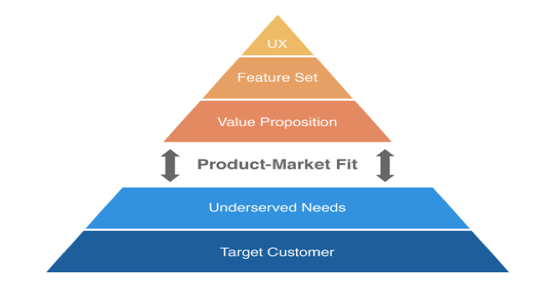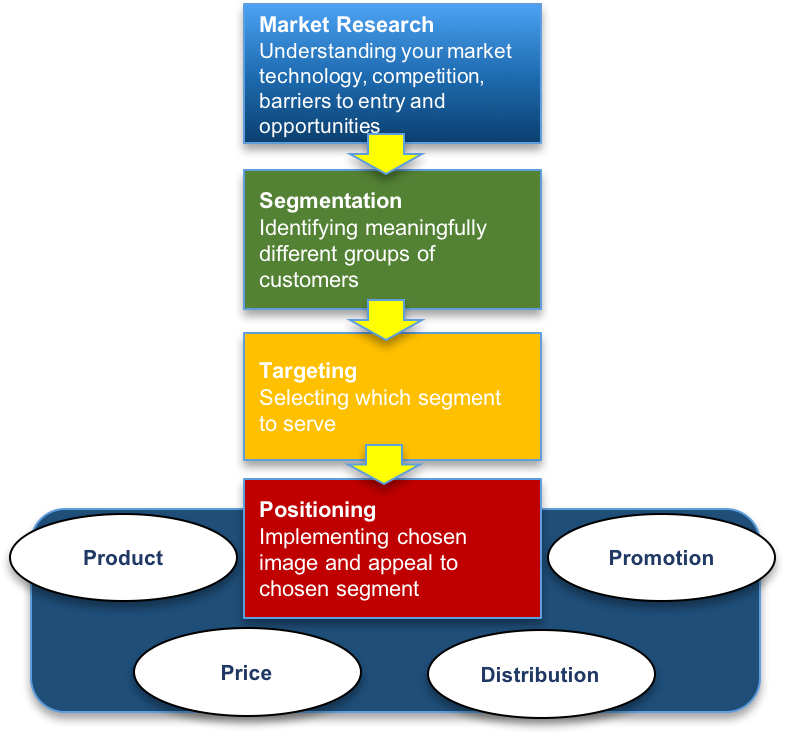What is your Market? Are your Market Segments Defined?
 Next, your target market needs to be clear and it needs to make sense. Who you are selling to? Are your go-to-market tools targeted at that market? Have you defined your market sufficiently to allow your team to identify the players in that market and what features or capabilities they will value most? Looking at the “Product-Market Fit” graphic to the right (an Agile business concept), your user experience, feature set, and overall value proposition needs to be a great “fit” to the underserved needs of your target customers.
Next, your target market needs to be clear and it needs to make sense. Who you are selling to? Are your go-to-market tools targeted at that market? Have you defined your market sufficiently to allow your team to identify the players in that market and what features or capabilities they will value most? Looking at the “Product-Market Fit” graphic to the right (an Agile business concept), your user experience, feature set, and overall value proposition needs to be a great “fit” to the underserved needs of your target customers.
It is very common for companies to attempt to sell their product or services to a broader market than they are able to serve. This is a compounding problem because when this occurs, not only will product features often be off the mark, you will also spend money and waste time developing features for customers that buy from someone else! Further, you will likely be trying to charge for something that at least a portion of your market does not value. Remember that it is better to be very successful in a small market and then grow than it is to be uninteresting in a larger market. Again, differentiation is critical but a clear understanding of the target customers is also critical to getting there.
With your market defined and segmented, marketing and messaging must follow suit. All audiences do not respond to the same marketing tools or messages. Customers for high fashion don’t necessarily respond to low cost. Of course, the amount of segmentation needed and the strategy for it depends heavily on the specifics of your business and the value proposition of your product. This can be a very creative and evolving process but in the end it needs to make sense.
Finally, if your market is sufficiently and appropriately defined with your products and messaging reasonably pointed in the right direction, is the market segment big enough for your goals? What is the compound annual growth rate (CAGR) of this market? What is the nature of competition in this market? What is your current market share and what are your plans to take market share? A clear understanding of these questions is critical to your health assessment and future business planning.
Porter’s model below (always relevant), addresses combines the need to do Market Research, Segmentation, Targeting and Positioning, with positioning resolved into the 4 “P’s” of Product, Place, Price and Promotion.

